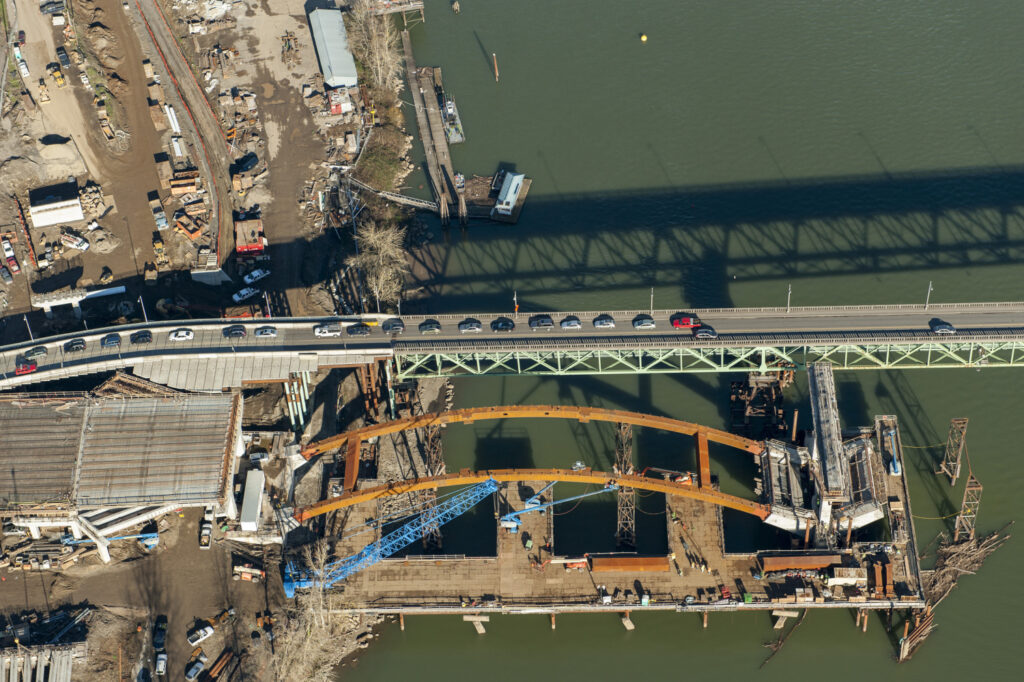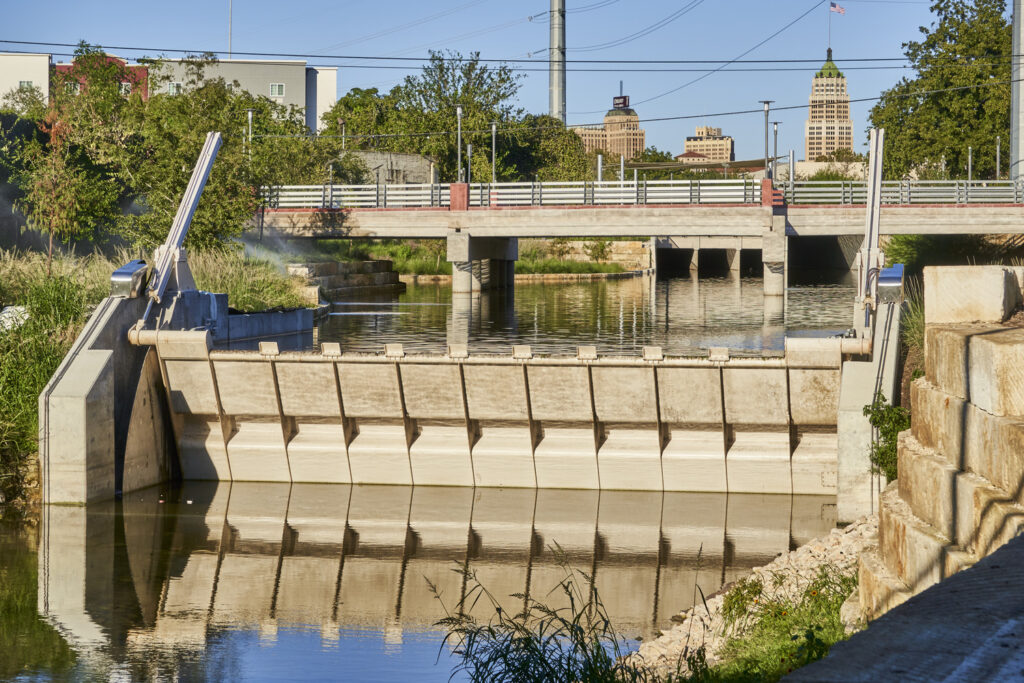From suspension bridges that allow us to traverse waterways and canyons, to the interchanges and underpasses we use on our daily commutes, bridges are an essential component of our transportation infrastructure. Sundt, a leader in bridge construction nationwide, has established a rich legacy of crafting these diverse structures.
“Oregon and Washington present multiple geographical and environmental considerations, as well as technical challenges that are unique compared to some of Sundt’s other regions. Things like seismic design requirements, conservation needs and a large number of waterways that require over-water work are just some of the things we account for in our planning processes,” said Project Director Jill Vaughan.
We asked Vaughan and Senior Project Managers Dustin Murphy and Ryan Silbernagel to weigh in on some of the most celebrated and notable bridge projects that Sundt has completed in the last decade. Both Silbernagel and Murphy have played integral roles in these projects across the country as well as within the Northwest.

Innovative Approach at Sellwood Bridge
When tasked with reconstructing the aging Sellwood Bridge over the Willamette River in Multnomah County, Oregon, Sundt aimed to minimize the impact on the surrounding community and the ecological impact. The team employed Building Information Modeling (BIM) and an advanced video presentation, to propose a faster, safer, and more cost-effective method: a “shoofly” detour bridge to maintain traffic flow during construction.
“The shoofly approach had been around for a while, but the difference is that no one had done it with a 3,400-ton truss span,” said Murphy, who served as a project manager on the job at the time. “Our team pulled it off by lifting the old bridge deck and truss with hydraulic jacks, moving it to one side and placing it on a set of temporary piers and approach spans. Doing this allowed us to limit the time we had to close down the bridge to 20 total days, shortened our schedule by over a year and reduced the cost to the owner by more than $5 million.”
In-water foundation work involved deep drilled-shaft foundations constructed off work bridges and barges. Sundt self-performed pipe pile and sheet pile installation and structural concrete from multiple barges.
Detailed traffic maintenance plans and alternative solutions minimized environmental disruptions. To address these potential threats, the team used perched box caissons instead of traditional cofferdams, saving significant materials including 780 tons of steel, 5,750 cubic yards of concrete and 13,100 cubic yards of dredging.
Construction was limited to July through October to avoid interfering with salmon migration. Strict noise and vibration regulations were adhered to for in-water work due to spawning season constraints.

Attention to Detail at San Pedro Creek Culture Park
Before making his way back to the Northwest, Silbernagel served as senior project manager on the San Pedro Creek Culture Park reconstruction project in San Antonio, Texas.
“Sundt self-performed all of the excavation, drainage and concrete structures,” said Silbernagel. “But this was not your typical flood control project because it’s intended to serve dual purpose as a community space. This meant that attention to detail wasn’t just important, it was everything.”
This four-phase project commenced with demolishing existing bridges and structures in the floodplain. It included reconstructing 1.3 miles of the creek, erecting five vehicle bridges, five pedestrian bridges, three public plazas, fountains, flood control gates and retaining walls. Extensive utility relocations were phased, requiring collaboration with 12 public and private entities. Additionally, new paved trails, 11 acres of landscaping, hardscaping and artwork were integrated into the space.
The improvements revitalized the creek’s ecosystem, replicating a natural stream more accurately than the previous concrete channel. Innovative features such as hydrodynamic separators and bioswales enhance water quality by removing pollutants from storm water runoff before discharge. San Pedro Creek now serves as a beautiful oasis for the San Antonio community and wildlife.

Bridge expertise spans across Sundt’s history
From moving the London Bridge to Lake Havasu City, Arizona in 1971 to modern-day projects like Ina Road and I-10 Interchange and the landmark West 7th Street Bridge, Sundt has consistently delivered exciting and innovative bridge projects.
“Transportation projects, especially those with bridge construction in the scope, are critical infrastructure,” said Murphy. “It’s vital to us that these structures are built to withstand intense conditions for decades while doing all we can to minimize impact to the community and environment in the process.”
Click here to see more of our bridge projects.